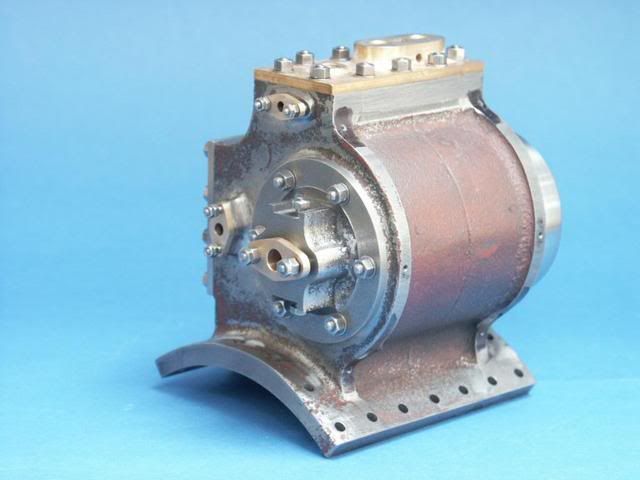Hi everyone
Seems to me the original thread started with the understandable nervousness of tapping small threads into cast iron.
We've all bought one of those universal kits of every tap size and matching dies for £12.50, only to discover they're brittle as hell, and Murphy's Law applies (the more expensive the part, the more difficult it will be to extract the broken tap…) I have a theory that some of these sets haven't got any relief, so they just bind up, but when you're starting out it isn't clear that these sets aren't HSS and if you're new to the game what are you spending all that extra money on anyway.
Those of us who persevered past this first disappointment spent a fortune on HSS, blue wizard or some such, and anyway breaking a few taps taught us quite a lot on how to feel when it's all about to go horribly wrong. Once you've thrown those cheap and brittle carbon steel taps in the scrap – along with the work piece you just ruined – and bought some decent HSS taps you find there's nothing to it really, just a bit of practice.
In fairness to Tracy Tools, the grade of CS they seem to use has always delivered the goods for me, But I would be very nervous of tackling an M5 thread in CI if all I had to hand was a CS tap. Depends on the grade of CI, and how granular it is. Bigger threads, or M5 and smaller in (most grades of) brass with a CS tap by all means.
Cast Iron isn't difficult to tap, but it's got to be done with a sharp tap. Lubricant is irrelevant if the tap is sharp and cuts freely – hence my comment about relief on the cutting edges. And lubricant won't make a dull tap cut, but it might help you rescue the tap out of the hole just as is begins to bind up. A sharp good quality HSS tap won't break in CI unless you force it off axis or collide with the bottom of the hole (under power – don't ask, took me three weeks to dissolve the tap remnant out of a block of aluminium I'd invested a week's work in with battery acid, and tapping 4 x M5 holes was the last operation) And any metric (coarse) thread in CI is doing exactly what the designers invented metric coarse to do.
And spiral point taps are a dream come true, particularly in the sizes below about 6 mm.
So – to sum up – bite the bullet and buy at least one HSS good quality tap (is one allowed to say EUROPEAN?) , preferably spiral point but it doesn't have to be. Doesn't matter if it's a shiny polished one or a coated one for what we're looking at here, but if does need to be new (= sharp). Make an alignment block to ensure the tap starts true. Make sure you drill the tapping size hole the right size (4.20 mm for standard M5 x 0.8 pitch coarse) and that the drill you use actually cuts that size. There's a whole different thread about playing with the size of the tapping drill in other materials but that's irrelevant here. My recommendation is not to use lubricant, but if you feel you should use something thin but oily. Spit works well, as does butter.
I don't fancy a very fine thread in cast iron – if it's subject to movement it's going to strip sooner or later, and if it's not then a coarse thread is designed to give the optimum holding capacity (whatever than means) for the given size of thread. If you really want to put an adjustable thread into cast iron and make it as fine as 0.5 pitch then you're looking at an insert of some kind (do helicoils exist in this size?).
I used to work with a bloke who'd creep up behind you as you were just into threading a hole. He'd just lean over your shoulder and mutter "Give us a ping". Worked every time.
Best of luck, let us know how it goes!
Simon
Iain Downs.





